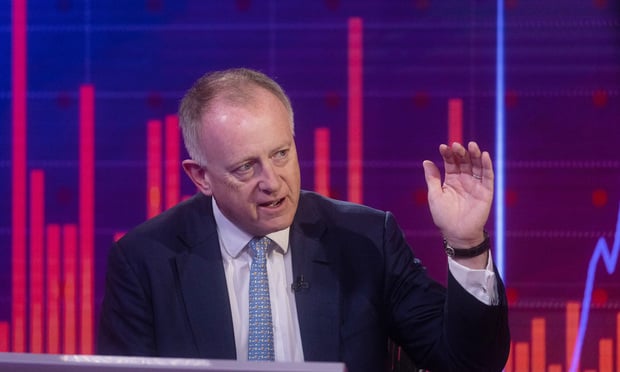Updated 11:30 a.m. ET
Global insurance mergers and acquisitions activity slowed across all sectors in 2016, according to a new study by Hartford, Connecticut-based Conning.
The year 2016 lacked the significant merger and consolidation activity experienced over the previous few years, particularly in the reinsurance sector. Instead many companies were focused on transaction digestion, expense management, and capital management.
Well below 2015 activity
"We identified 165 insurer transactions globally in 2016 with aggregate announced value of $33 billion — well below 2015 activity levels," said Alan Dobbins, a Director, Insurance Research at Conning. "The year was marked by this retreat in activity, with many companies looking inward. While the property-casualty sector continued to have strong activity by its more offensive-minded competitors, the life sector pulled back significantly."
The Conning study, "Global Insurer Mergers & Acquisitions: Activity Slows, but Pressures Remain" tracks and analyzes both U.S. and non-U.S. insurer M&A activity across property-casualty, life-annuity and health insurance sectors. Specific transactions are detailed, and trends are analyzed across all sectors.
"Mergers and acquisitions activity in 2016 was marked by a select number of property-casualty insurers playing offense and defense, as the life industry dropped to just a quarter of its 2015 activity," said Steve Webersen, Head of Insurance Research at Conning.
Particular focus on specialty assets
Despite a drop in activity in 2016, the P&C sector led the industry M&A activity with a particular focus on specialty assets. The year was marked by a selected number of insurers playing offense and defense.
"Some of the key themes we analyzed in 2016 property-casualty acquisition activity included continued Japanese pursuit of established and global underwriting platforms, serial acquirers continuing their build-outs, run-off acquisitions, and the continued focus on property-casualty specialty assets," according to Webersen.
Arch, Fairfax, and Liberty Mutual were all on offense in 2016 and led the property-casualty sector in making major acquisitions to expand their specialty capabilities. Arch’s $3.4 billion acquisition of United Guaranty cements its position as the leader in the mortgage insurance industry. Fairfax improved its North American insurance operations with the acquisition of Allied World while capitalizing on AIG’s divestment activities to expand in Latin America and Eastern Europe. Liberty Mutual accelerated its global specialty push through the acquisition of E&S (excess & surplus lines) insurer Ironshore.
AIG executed more than 10 divestment transactions
Conversely, AIG continued its global divestment of insurance and investment assets. All told, AIG executed more than 10 divestment transactions, not including its $10 billion reinsurance transaction with Berkshire Hathaway. Despite returning more than $12 billion to shareholders in the form of share repurchases and dividends, AIG continues to come under pressure from shareholders seeking an improved market position and return story.
Alternatively, The Hartford signaled a shift in its position to the market with the acquisition of E&S insurer Maxum Specialty. While a small transaction on a relative basis, this transaction was the first property-casualty acquisition for the current CEO and follows the company’s more recent divestment strategy.
Outlook for 2017
Conning anticpates that M&A activity will pick up in 2017 across all sectors. The P&C sector will likely continue to be fueled by strong fundamentals: an overabundance of capital, fewer organic opportunities in a soft market and pressure on expense ratios and earnings. Also, optimism regarding the U.S. growth outlook should drive continued focus on North American targets. Foreign capital, particularly from Japanese-owned companies, should be a key driver for larger transactions.
Related: Insurance industry looks for M&A deals in 2017
Personal lines sectors saw limited activity in 2016, but Conning believes we may see activity related to two challenged areas: Florida homeowners, where AOB (assignment of benefits) fraud is of increasing concern for market participants, and auto insurance markets that face pressure from increasing frequency of claims and the increasing threat of disruption from nontraditional players.
Want to continue reading?
Become a Free PropertyCasualty360 Digital Reader
Your access to unlimited PropertyCasualty360 content isn’t changing.
Once you are an ALM digital member, you’ll receive:
- Breaking insurance news and analysis, on-site and via our newsletters and custom alerts
- Weekly Insurance Speak podcast featuring exclusive interviews with industry leaders
- Educational webcasts, white papers, and ebooks from industry thought leaders
- Critical converage of the employee benefits and financial advisory markets on our other ALM sites, BenefitsPRO and ThinkAdvisor
Already have an account? Sign In Now
© 2025 ALM Global, LLC, All Rights Reserved. Request academic re-use from www.copyright.com. All other uses, submit a request to asset-and-logo-licensing@alm.com. For more information visit Asset & Logo Licensing.








